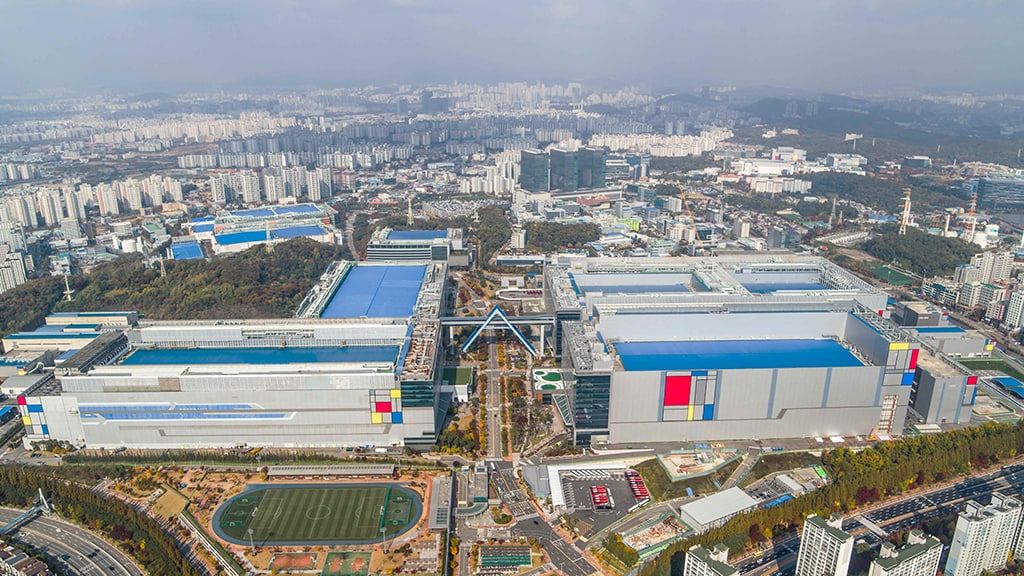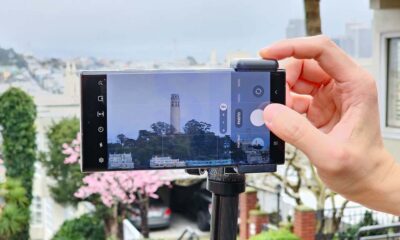News
Samsung’s AI leap attracts non-Galaxy users

People in Australia are crazy about Samsung Galaxy AI features. Samsung recently shared market insights on AI perception, revealing four out of five non-Samsung consumers prefer Galaxy devices for their next smartphone upgrade.
Galaxy AI is generating interest and excitement beyond current Samsung users in Australia. The Korean tech giant is committed to continue delivering AI-first experiences across mobile devices to empower users and enrich their lives.
Galaxy AI in Australia
People are highly aware of Galaxy AI across the Southeast Asia and Oceania (SEAO) region. Both Samsung and non-Samsung consumers recognize the potential of AI. Four in five non-Samsung users ensure upgrading to Galaxy to try the latest AI features.
About two-thirds are using Galaxy AI, with the top-used features being Circle to Search, Chat Assist, and Generative Edit. Galaxy users also expressed satisfaction with Galaxy AI capabilities that improve efficiency and productivity.
3 top loved features in Australia:
Circle to Search (92%): AI helps consumers find information faster by streamlining social media and internet interactions with a simple and intuitive gesture.
Transcript Assist (90%): This feature enables users to easily transcribe meeting recordings and generate summaries and translations.
Generative Edit (89%): This feature enables users to easily resize, reposition, or realign objects in photos to perfect a great shot.
The South Korean tech giant is committed to enhancing consumer experiences through AI-powered solutions. The growing popularity of Galaxy AI features reflects this dedication to a user-centric approach in the market.
Since the release of the Galaxy S24 series, which has introduced a new era of mobile AI experiences, Samsung has also enabled users to experience Galaxy AI on a number of existing phones and tablets through the One UI 6.1 update.
News
[Report] Samsung Foundry Division undergoes major restructuring

Samsung Foundry is not doing well with the newest cutting-edge technologies. Now, a new report from a Korean media outlet suggests that Samsung could begin DS Division restructuring by year-end, aiming to break down silos.
According to ChosunBiz (via TrendForce), Samsung plans a major shuffle in the DS (Semiconductor Foundry) Division. The move is aimed at addressing issues like lack of communication and team self-interest.
Additionally, Samsung is also facing competition in the DRAM market, falling behind SK Hynix in HBM and DDR5. TrendForce highlights that the company needs to go beyond restructuring to fundamentally change its organization.

Samsung’s DS division reportedly planning to strengthen collaboration processes by integrating existing team-based structures into a project-centered model, to resolve issues arising from the siloed operation of departments.
Recently, it was reported that the company is planning to cut up to 30% of its workforce in the future. The Korean tech giant’s Foundry business is struggling due to various issues, including low yields for the 3nm GAA process.
Earlier, The Korea Times reported that yield for Samsung’s 3nm process remained in the single digits until Q1 this year, and slightly improved to about 20% in Q2. The company needs the yield rate to be at least 60 percent to trigger mass production.
A Samsung spokesperson cited by Chosun Biz admitted that there continues to be a disconnection between the departments developing new processes and those responsible for mass production, with serious issues arising from the shifting of blame for failures.
News
Samsung Galaxy Watch 5 joins historic SpaceX Polaris Dawn mission

Samsung Galaxy Watch 5 joined the historic SpaceX Polaris Dawn mission. The company has recently announced the return of its smartwatch from space post-completion of a space mission aboard SpaceX’s Polaris Dawn.
SpaceX launched its Polaris Dawn (spacewalk) on September 10, which returned safely on the 15th. Samsung today disclosed the Galaxy Watch 5 was “used in a study to monitor the body composition of astronauts” in the Polaris Dawn mission.
Galaxy Watch x SpaceX
Sending the smartwatch to space in a flagship SpaceX mission wasn’t a general task. Samsung collaborated with different US authorities and institutions so its Galaxy Watch is eligible for joining the spacewalk mission.

Polaris Dawn Returned to Earch | Via: Hindustan Times
Samsung says the study was conducted to monitor the human body’s response and health status in a space environment. The company’s Galaxy Watch 5, launched last year, was used in the study to monitor the body’s response of astronauts.
The Pennington Biomedical Research Center at Louisiana State University and the University of Hawaii Cancer Center have announced that the body composition values measured with the Galaxy Watch showed a high correlation of 93% to 97% with the results measured by clinical equipment, such as dual-energy X-ray absorptiometry (DXA) and bioelectrical impedance analysis (BIA).

Image: Polaris Program
Notably, the human body’s response and health status in a space environment are completely different from Earth’s. The study was conducted to prevent muscle loss, hence, astronauts wore the Galaxy Watch 5 to experiment.
Samsung’s Watch is way more preferable compared to conventional body composition monitoring gadgets. The Galaxy smartwatch reportedly offered smooth space health research with its accurate monitoring capabilities while being easy to wear.
Body Composition:
Galaxy Watch’s Body Composition feature is supported by Samsung’s BioActive sensor. It allows users to accurately understand physical conditions by analyzing skeletal muscle mass, basal metabolic rate, body water content, and % of body fat.
News
Ming-Chi Kuo: There’s no Apple iPhone 16 ‘supercycle’

Apple should be unhappy with iPhone 16 sales numbers. Apple analyst Ming-Chi Kuo compiled data from a supply chain survey and pre-order results from official websites. It suggests the new iPhones are not selling as expected.
According to the report, pre-orders for the Apple iPhone 16 series in the first weekend are estimated to be about 37 million units. This is approximately down 12.7% year-on-year compared to the iPhone 15 line’s first-weekend sales.
In addition, the demand for iPhone 16 Pro and Pro Max is lower than expected. It comes as quite a surprising move as Apple debuted an even more powerful chipset, expanded the Telephoto camera to the Pro model, and fueled AI capabilities.
Has Apple Intelligence failed?
Apple partnered with OpenAI to bring AI capabilities to the iPhone. The iOS 18 introduces AI features on the iPhone 15 Pro and iPhone 15 Pro Max. The Apple Intelligence suite is coming across the iPhone 16 models.
Lower than-expected sales suggest Apple Intelligence made no impact on sales. The non-Pro models also bring AI capabilities and have a dedicated Camera Control button too. However, consumers don’t consider them a reason to upgrade.
It is also possible that the sales may be boosted in the next couple of weeks. The reason is, that AI features won’t be available in the iPhone 16 series when they start to deliver. Rather, Apple planned to roll out in batches starting in October.
In addition, intense competition from Huawei in China is impacting iPhone demand over there. Well, Kuo says the US tech giant would not reduce its production, and it’s expected to go on as previously decided.













